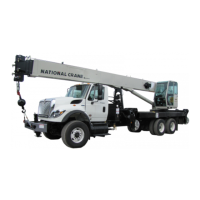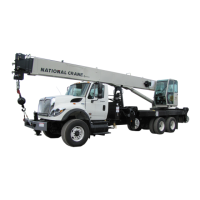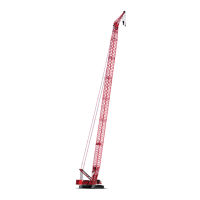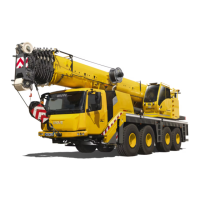HYDRAULIC SYSTEM 14000 SERVICE MANUAL
2-4
Published 09-10-14, Control # 065-24
4. Fill tank through stand pipe at top of tank (2a, Figure 2-1)
or by pumping oil through power fill coupling (2b) with
owner supplied portable pump.
Do not fill tank through breather port. Hydraulic
system could be contaminated from unfiltered oil.
Open air valve (4) to release pressure before filling
through stand pipe.
5. Only use approved hydraulic oil in system (see Folio
2129).
6. Replace desiccant breather cartridge (3) with a new one
when all desiccant beads turn dark green (they are gold
when new). See Replacing Desiccant Breather topic in
this section (Figure 2-4
).
7. Clean exterior of system often; do not let dirt accumulate
on or around any part of system.
8. Check for external leaks. Leaks are not only unsafe;
they also attract dirt and in some cases allow air and
water to enter system. Do not return leakage oil back to
hydraulic tank.
Do not to use your hands to check for leaks.
• Look for oil leaking from fittings and between parts
that are bolted together. Tighten loose fittings and
attaching bolts to proper torque; do not overtighten.
• If leakage persists at these points, replace seals or
gaskets.
• Look for oil leaking from pump and motor shaft
ends, valve spool ends, and cylinder shaft ends.
Replace seal if leakage is found at any of these
points.
• Replace tubes that are cracked, kinked, or bent.
• Replace hoses that are cracked, split, or abraded.
• Listen to pumps and motors for unusual noises; a
high pitched whine or scream can indicate that air is
being drawn in.
An air leak can be pinpointed by flooding inlet fitting,
hose, or tube with oil. If there is an air leak, the oil will
cause a noticeable reduction in noise. Correct cause for
any air leak, or pump/motor will be ruined.
NOTE: A high pitched whine or scream from a pump can
also indicate cavitation (pump being starved of oil).
This condition is caused by the following problems:
• Collapsed or plugged suction line
• Wrong oil (viscosity too high)
9. Look for signs of overheating: heat peeled parts, burned
and scorched oil odor, and darkening and thickening of
oil. Temperature of oil in tank must not exceed 180°F
(82°C).
If oil temperature in tank goes above 180°F (82°C) or
below 70° (21°C), a fault alarm will come on and fault
Hydraulic Fluid Temperature icon will appear on fault
display (Figure 2-3
).
10. Have hydraulic oil analyzed at regular intervals to
determine condition of oil and extent of system
contamination.
By having the oil analyzed on a regular basis, an oil
change interval meeting your operating conditions can
be established.
NOTE: Contact your oil supplier for the availability of oil
analysis services and the steps that should be
taken to obtain these services.
Replacing Desiccant Breather
See Figure 2-4 for the following procedure.
1. Unscrew breather from tank.
2. Unscrew cap from cartridge and discard cartridge.
3. Remove protective caps from top and bottom of new
cartridge.
4. Securely attach cap to cartridge — hand tighten only.
5. Securely attach breather to hydraulic tank — hand
tighten only.
HYDRAULIC FLUID LOW
Fault Icon
FIGURE 2-2
FIGURE 2-3
HYDRAULIC FLUID
TEMPERATURE Fault Icon
P2348b
Desiccant
Breather
Desiccant
Beads
Service
Indicator
FIGURE 2-4
Reusable
Cap
Disposable
Cartridge
